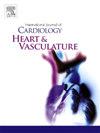Age-specific associations of invasive treatment with long-term mortality of patients with acute myocardial infarction: Results of a real-world cohort analysis
IF 2.5
Q2 CARDIAC & CARDIOVASCULAR SYSTEMS
引用次数: 0
Abstract
Background
To investigate the age-specific association between invasive treatment, that is percutaneous coronary intervention (PCI) or coronary artery bypass graft (CABG) at acute myocardial infarction (AMI) and all-cause long-term mortality.
Methods
The analysis was based on 4964 hospitalized AMI patients (age 25–84 years) registered by the population-based Augsburg Myocardial Infarction Registry between 2010 and 2017. The median follow-up time was 4.7 years (IQR: 2.7; 6.8). All-cause mortality was obtained by regularly checking the vital status of all registered AMI patients in cooperation with the regional population registries. In multivariable adjusted Cox regression analyses the age-specific associations between invasive therapy (PCI or CABG versus no invasive therapy) and all-cause mortality were investigated.
Results
During follow-up 1224 patients (805 men and 419 women) died. In patients younger than 55 years 7.6 %, in the age group 55–64 years 7.1 %, in the age group 65–74 years 12.2 %, and in the age group 75–84 years 21.6 % did not undergo invasive therapy (PCI or CABG) during hospital stay. Invasive therapy using PCI or CABG significantly reduced mortality risk in all age-groups in comparison to AMI patients without invasive treatment. Even 75–84 years old benefited very impressively from invasive therapy regarding long-term all-cause mortality (PCI: HR 0.55; 95 % CI 0.44–0.70; CABG: HR 0.43; 95 % CI 0.30–0.62).
Conclusions
Invasive or surgical therapy procedures in the treatment of AMI patients are effective in all age groups. Therefore, also old AMI patients should receive guideline-compliant therapy to achieve a better outcome.
有创治疗与急性心肌梗死患者长期死亡率的特定年龄关联:真实世界队列分析结果
背景为了研究急性心肌梗死(AMI)时经皮冠状动脉介入治疗(PCI)或冠状动脉旁路移植术(CABG)等侵入性治疗与全因长期死亡率之间的年龄特异性关联,奥格斯堡心肌梗死登记处在 2010 年至 2017 年间登记了 4964 名住院的急性心肌梗死患者(年龄在 25-84 岁之间)。中位随访时间为 4.7 年(IQR:2.7;6.8)。通过与地区人口登记处合作,定期检查所有登记的急性心肌梗死患者的生命体征,从而获得全因死亡率。在多变量调整 Cox 回归分析中,研究了有创治疗(PCI 或 CABG 与无创治疗)与全因死亡率之间的年龄特异性关联。在住院期间未接受侵入性治疗(PCI 或 CABG)的患者中,55 岁以下占 7.6%,55-64 岁占 7.1%,65-74 岁占 12.2%,75-84 岁占 21.6%。与未接受侵入性治疗的急性心肌梗死患者相比,使用 PCI 或 CABG 进行侵入性治疗可显著降低所有年龄组患者的死亡风险。在长期全因死亡率方面,即使是 75-84 岁的患者也从侵入性治疗中获益匪浅(PCI:HR 0.55;95 % CI 0.44-0.70;CABG:HR 0.43;95 % CI 0.30-0.62)。因此,老年急性心肌梗死患者也应接受符合指南的治疗,以获得更好的疗效。
本文章由计算机程序翻译,如有差异,请以英文原文为准。
求助全文
约1分钟内获得全文
求助全文
来源期刊

IJC Heart and Vasculature
Medicine-Cardiology and Cardiovascular Medicine
CiteScore
4.90
自引率
10.30%
发文量
216
审稿时长
56 days
期刊介绍:
IJC Heart & Vasculature is an online-only, open-access journal dedicated to publishing original articles and reviews (also Editorials and Letters to the Editor) which report on structural and functional cardiovascular pathology, with an emphasis on imaging and disease pathophysiology. Articles must be authentic, educational, clinically relevant, and original in their content and scientific approach. IJC Heart & Vasculature requires the highest standards of scientific integrity in order to promote reliable, reproducible and verifiable research findings. All authors are advised to consult the Principles of Ethical Publishing in the International Journal of Cardiology before submitting a manuscript. Submission of a manuscript to this journal gives the publisher the right to publish that paper if it is accepted. Manuscripts may be edited to improve clarity and expression.
 求助内容:
求助内容: 应助结果提醒方式:
应助结果提醒方式:


